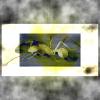The news came out recently that monarch butterflies, even wild ones, lose the ability to orient south and migrate when they were raised indoors.
Newest research shows that even being raised in a GREENHOUSE is insufficient.
https://www.scienced...00804190711.htm
And for anyone who didn't know, monarch migration is multi-generational... the ones who start flying south are the grandchildren (or thereabouts) of those who started flying north out of Mexico. The butterflies that return to the same trees in Mexico or California are the great-great grandchildren-ish of the ones who perched there the year before.
Edited by OhNoNotAgain, October 21 2020 - 8:34 AM.














